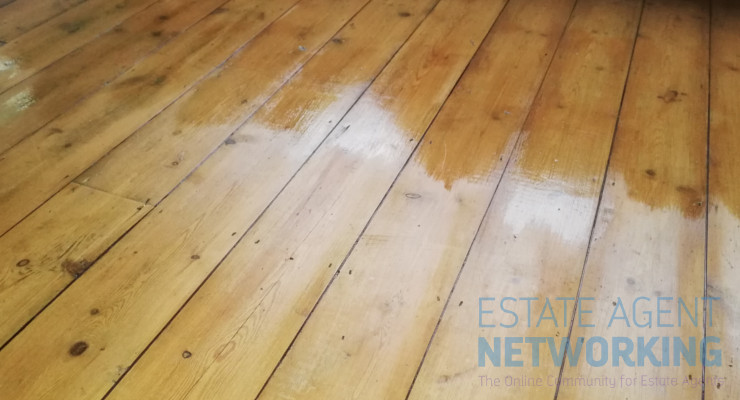How to Care for and Repair Old Timber Floors
I really do love those old oak floor boards that grace some property, in can give such character and charm to each room they grace and in my mind also add value. It is though very important on the quality of the flooring such as oak or pine and what condition it is in – Here we look at some basic care and repairs tips and tricks for home owners who are lucky enough to have some old timber flooring:
We all know the common problems timber flooring can give us from creaky boards to damage from dampness and wood worm. There are though many other problems that we may need to overcome:
Dampness:
How the floor is laid and what ventilation it has will effect your timber flooring. Remember that not all timber flooring are boards laid over support joists, some may have simply been laid straight on old flooring or with older property such as Victorian, it may be laid close to or directly on hardcore / sand etc.
If you have boards laid on joists then you will have some sort of ventilation or at least the opportunity to add ventilation which will in most cases remedy dampness issues in that the wood is aired and moisture (depending where it originates) will be allowed to escape.
Solid flooring will pose slightly more complicated and costly options and at times total replacement so that the source of dampness can be treated, ie some form of damp proof coursing or digging down / raising of floors.
Creaky floor boards:
Those annoying noises that we get from wooden floors, such as that creaky step on the stairs or even more in-depth issues such as areas of the room shaking due to unstable support system, ie items rattling on the table as you walk past.
Rarely an issue for solid timber flooring. An issue for those who had flooring installed previously where due care and consideration on quality of craftsmanship and tools lacked thus standards (maybe at the time of install might have been fine) not to what they should be today.
Many occasions a simple replaced nail / screw will suffice though it may very well be what lies below which is causing noises such as boards rubbing against water pipes. A more intensive investigation may be required where a hammer and nail will not suffice, some may find that an area of flooring or whole flooring is required to be lifted and re-laid plus possible replacement of joists and relocation of piping / electric cables.
Remember that some old flooring may have had a long and somewhat abused life. Not only millions of steps have walked over them, but they may have had extra nails applied in for carpets / carpet gripers / radiators / cupboards and more which may have been attached to them. You should also consider that your flooring, especially suspended timber flooring, will likely of had boards lifted up in order to run pipes / cables beneath them and not replaced securely or even not replaced in the same way.
The likes of the good old noggins inserted between the joists can help to remedy many creaky boards as well as reinforcing existing joists by bolting on supports.
Care for your boards:
Once you have treated what ever defects your timber floors has, you should make sure you invest in looking after them as they do get an awful amount of wear and tear especially within rooms we frequently use daily.
Ventilation is always important so make sure that any vents / air-bricks are clear and allowing free flow of air.
If you have any issues with your flooring, ie external dampness such as around the fireplace or external walls or even if you have a burst pipe / leaky pipe then think about get a professional in rather than tackling in yourself or letting the plumber do it who make not have the required skills.
Invest in products that will protect and seal your timber flooring and make sure when you opt for products that they suit the type of timber flooring you have such as softwood / hardwood, oak or pine etc. Many products are on the market such as oils, varnishes, stains, cleaners, insect treatments and more.









